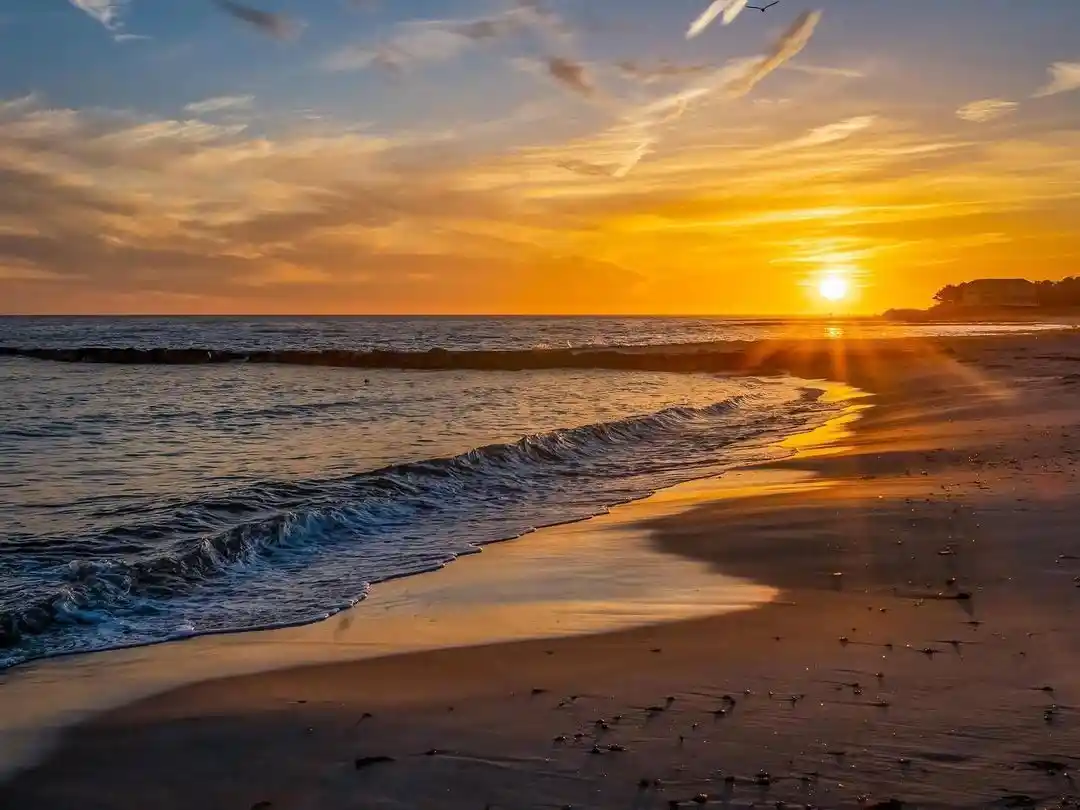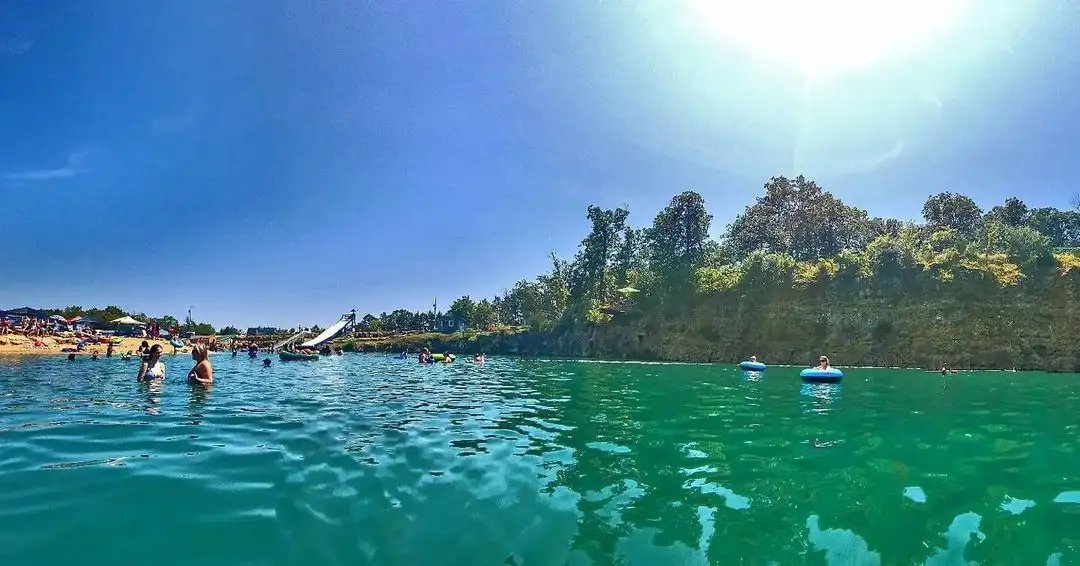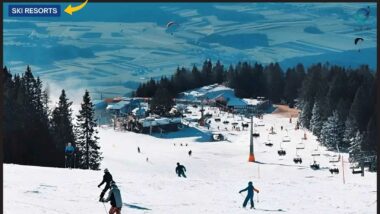Texas Photo Guide: 15 Must-See Scenic Locations in 2024

Are you ready to discover the most beautiful places in Texas? Whether you love taking photos or just enjoy breathtaking views, Texas has something for everyone. The state is full of scenic spots, from coastal beaches to mountain ranges.
In this Texas photo guide, we show you 15 must-see places you should visit in 2024. These stunning locations offer great chances to capture the beauty of Texas’s landscapes and landmarks. Let’s get started and explore the best places in Texas to photograph this year!
1. Big Bend National Park

Big Bend National Park in West Texas is a haven for photographers, offering a diverse range of landscapes and subjects to capture. The park is home to unique rock formations, the stunning Chisos Mountains, and the winding Rio Grande River, making it a destination full of opportunities for breathtaking photographs.
Must-See Spots:
- Santa Elena Canyon: This dramatic canyon features towering cliffs and a scenic section of the Rio Grande River, creating a beautiful natural backdrop for your photos.
- Balanced Rock: A remarkable rock formation that balances precariously on two smaller rocks, offering a great spot for photographers to snap a memorable shot.
Photography Tips:
- Explore the Trails: Big Bend has numerous hiking trails that lead to various scenic viewpoints. Make sure to venture out and find unique perspectives for your shots.
- Golden Hour: Take advantage of the soft, warm light during the early morning or late afternoon to enhance the colors and textures in your photos.
- Bring a Wide-Angle Lens: To capture the expansive landscapes and sweeping vistas of Big Bend, a wide-angle lens will help you include more of the park’s stunning scenery in your shots.
With its vast, untamed beauty, Big Bend National Park is a dream destination for photographers looking to capture the essence of Texas’ natural landscapes.Top of Form
2. Franklin Mountains State Park, El Paso
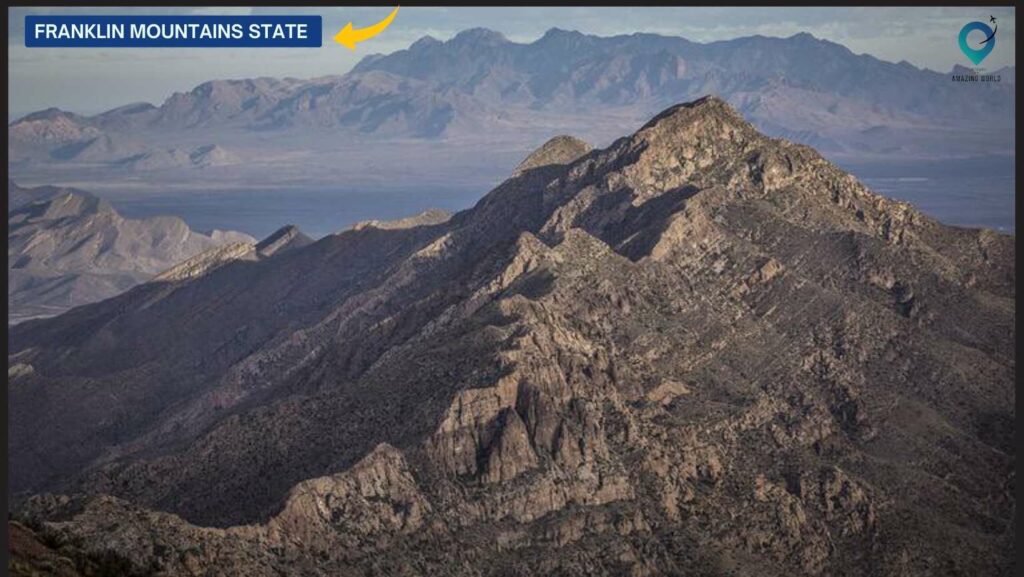
Franklin Mountains State Park is a natural oasis nestled in the heart of El Paso, offering a picturesque backdrop for photographers and outdoor enthusiasts. The park showcases the striking Franklin Mountains and is one of the most photogenic areas in Texas, especially during the vibrant sunset hours.
What to Photograph:
- The Franklin Mountains: These majestic peaks stretch across the city, providing a scenic landscape perfect for capturing the beauty of El Paso.
- Stunning Sunsets: The park is known for its breathtaking sunsets, where the sky is painted in hues of orange, pink, and purple, creating a captivating setting for photography.
Best Activities:
- Hiking: Franklin Mountains State Park offers a variety of trails for hikers of all levels, providing access to unique vantage points for great photos.
- Mountain Biking: Adventure seekers can explore the park’s rugged terrain and take advantage of photo opportunities along the trails.
- Rock Climbing: The park is also popular for rock climbing, allowing photographers to get close-up shots of the mountain’s rugged beauty.
Photography Tips:
- Capture the Wildflowers: In the spring, the base of the Franklin Mountains is adorned with colorful wildflowers. Get low to the ground to capture their vibrant colors against the backdrop of the mountains.
- Timing is Key: Aim to photograph during golden hour for the best lighting, particularly at sunrise or sunset, to enhance the colors and textures of your photos.
- Use a Tripod: For capturing the beauty of sunsets and sweeping landscapes, a tripod can help stabilize your shots and achieve sharp, clear images.
With its natural charm and diverse outdoor activities, Franklin Mountains State Park is a must-visit location for photographers seeking to capture the essence of the El Paso region.
3. Enchanted Rock State Natural Area, Fredericksburg

Enchanted Rock State Natural Area is a unique and captivating destination in the Texas Hill Country. The area is renowned for its massive granite dome, which rises majestically above the surrounding landscape. Photographers are drawn to this natural wonder for its impressive geological features and the scenic vistas it offers.
What to Photograph:
- The Granite Dome: The towering granite dome is the star of the show and makes for striking photographs, especially with its distinct, rounded shape and smooth surface.
- Surrounding Rock Formations: Explore the trails around Enchanted Rock to discover various intriguing rock formations that provide additional opportunities for great shots.
Best Time to Visit:
- Early Morning: The soft light of sunrise illuminates the granite dome beautifully, casting gentle shadows and highlighting its unique textures.
- Late Afternoon: As the sun begins to set, the warm glow creates a picturesque scene, enhancing the colors and contours of the landscape.
Photography Tips:
- Experiment with Angles: Try capturing the granite dome from different perspectives, such as from below or from a distance, to add variety to your photos.
- Use a Polarizing Filter: A polarizing filter can help reduce glare and enhance colors, especially when photographing during bright sunlight.
- Include the Surrounding Landscape: Consider incorporating the lush greenery and other natural features around Enchanted Rock to add depth and context to your images.
With its awe-inspiring granite dome and beautiful surroundings, Enchanted Rock State Natural Area is a must-visit destination for photographers seeking to capture the stunning natural beauty of Texas Hill Country.
Also Read– 15 Texas Beaches to Visit
4. San Antonio River Walk
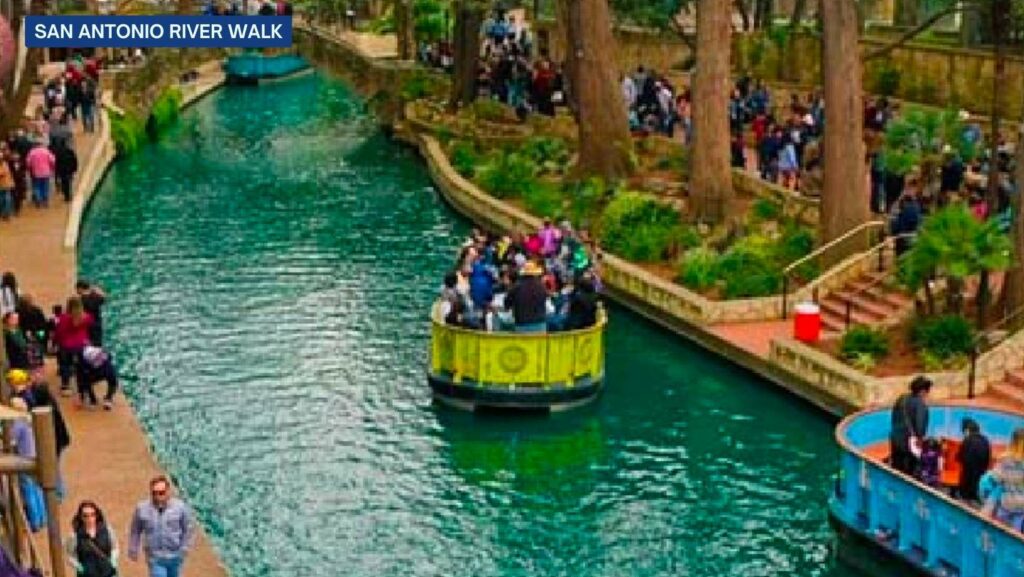
The San Antonio River Walk, also known as the Paseo del Rio, is a vibrant 15-mile urban waterway that winds its way through downtown San Antonio. This iconic destination is a hub for both locals and visitors, offering a rich array of dining, shopping, and cultural experiences. The picturesque scenery and lively atmosphere make it a photographer’s paradise.
What to Photograph:
- The Urban Waterway: Capture the charm of the River Walk as it meanders through the city, flanked by shops, restaurants, and beautiful greenery.
- Illuminated Storefronts: The River Walk comes alive at night with colorful lights reflecting on the water, creating a magical ambiance perfect for evening photography.
Must-See Spots:
- Restaurants: The River Walk is home to a variety of restaurants with riverside seating, offering great photo opportunities of people enjoying meals along the water.
- Cultural Establishments: Discover the cultural richness of the River Walk by photographing the historic buildings, art installations, and public performances that add character to the area.
Photography Tips:
- Capture Nighttime Scenes: The River Walk is most enchanting after dark, when the lights of the city reflect on the river, creating a stunning visual effect.
- Frame Your Shots: Use the river’s natural curves and the architecture along its banks to frame your photographs and create dynamic compositions.
- Include People: Adding people to your photos can bring the scene to life and showcase the River Walk’s lively and welcoming atmosphere.
Whether you’re strolling along the waterway during the day or soaking in the vibrant nightlife, the San Antonio River Walk offers endless opportunities for captivating photographs. It’s a must-visit destination for any photographer exploring the heart of San Antonio.
5. Hamilton Pool Preserve, Dripping Springs
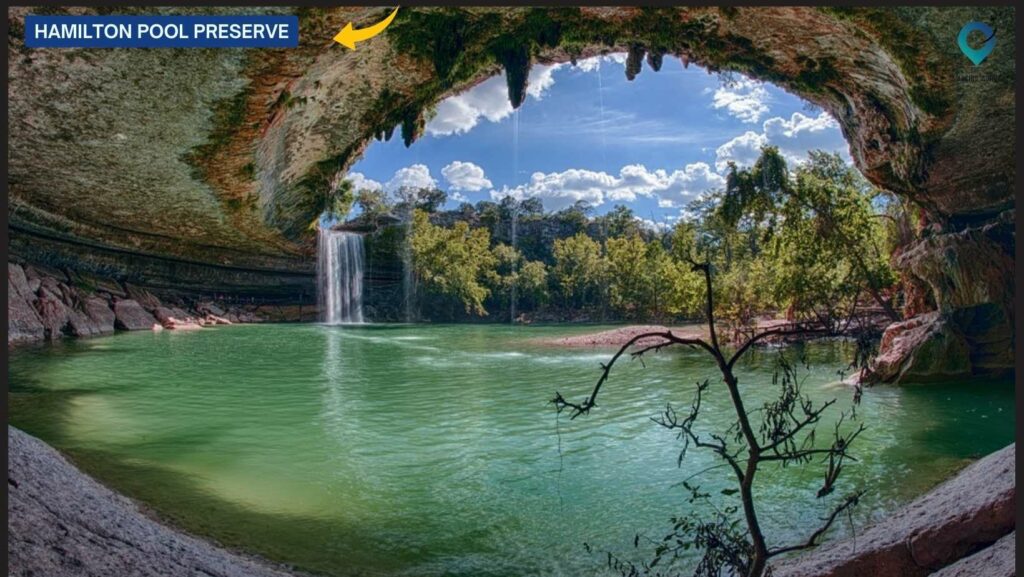
Hamilton Pool Preserve is a breathtaking natural wonder located about 30 miles west of Austin, Texas. The preserve is known for its stunning natural swimming hole, which features a picturesque 50-foot waterfall plunging from a limestone ledge into a turquoise pool. Surrounded by lush forest, this serene oasis offers photographers a wealth of opportunities to capture the beauty of nature.
What to Photograph:
- The Natural Swimming Hole: Capture the vibrant blue-green waters of Hamilton Pool as they reflect the light, along with the dramatic waterfall cascading into the pool.
- The Waterfall: The 50-foot waterfall is a central focal point for photography, creating a mesmerizing scene as it flows over the limestone ledge.
- Lush Forest Surroundings: The preserve’s 232 acres are filled with dense vegetation, offering plenty of chances to capture the natural beauty of the area.
Photography Tips:
- Make Reservations in Advance: During the summer months, reservations are required to visit Hamilton Pool, so plan ahead to secure your spot and capture the beauty of the preserve.
- Visit During Golden Hour: Aim to photograph in the early morning or late afternoon for the best lighting, which enhances the colors and tranquility of the pool.
- Use a Polarizing Filter: A polarizing filter can help reduce glare from the water and foliage, allowing you to capture the true colors of the scene.
- Take Multiple Angles: Explore the area from different vantage points to discover unique perspectives of the pool, waterfall, and surrounding forest.
Hamilton Pool Preserve is a must-see destination for photographers seeking to capture the stunning landscapes and serene atmosphere of the Texas Hill Country. With its natural beauty and tranquility, the preserve offers an unforgettable experience for anyone who visits.
6. El Capitan, Guadalupe Mountains National Park
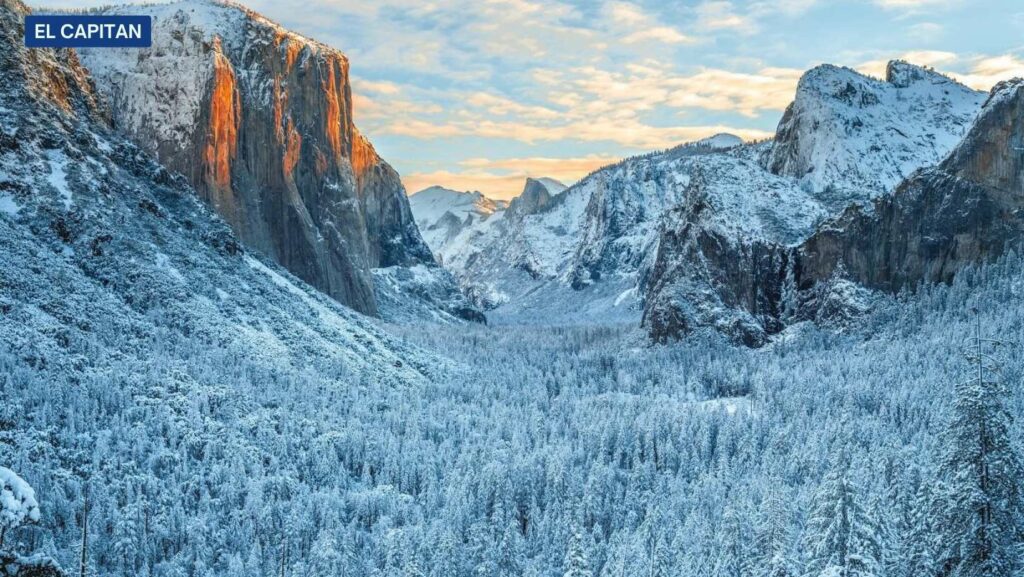
El Capitan, located in Guadalupe Mountains National Park in West Texas, is an imposing limestone peak that serves as a striking landmark in the Chihuahuan Desert. Rising prominently above the surrounding landscape, El Capitan offers photographers the chance to capture its rugged beauty against a backdrop of wide-open vistas.
What to Photograph:
- El Capitan: The distinct peak of El Capitan is a must-capture subject, with its unique shape and dramatic presence against the desert landscape.
- Rugged Landscapes: Surrounding El Capitan are vast, rugged landscapes, including canyons, rock formations, and high desert plains that provide plenty of photo opportunities.
Best Hikes:
- Pine Springs Visitor Center: Trails originating from the visitor center offer easy access to El Capitan and its surroundings. From there, you can embark on various hikes to get closer to the peak.
- El Capitan Trail: This trail offers incredible views of the peak as you hike along the base of the mountain, providing a variety of perspectives for your photography.
- Guadalupe Peak Trail: This trail leads to the highest point in Texas and provides sweeping views of El Capitan and the surrounding region.
Photography Tips:
- Time of Day: Visit during early morning or late afternoon to capture the soft light that enhances the colors and textures of the peak and surrounding landscape.
- Use a Telephoto Lens: A telephoto lens can help you capture close-up shots of El Capitan’s intricate details from a distance.
- Plan Your Shots: Explore the different trails and viewpoints to find the best angles and compositions for your photos.
El Capitan and Guadalupe Mountains National Park offer photographers a chance to capture the striking beauty of West Texas’s landscapes. The park’s diverse terrain and unique geological features make it a must-visit destination for nature and landscape photographers.
7. Guadalupe River State Park, Spring Branch

Guadalupe River State Park is a serene and picturesque destination in Spring Branch, Texas. The park centers around a peaceful stretch of the Guadalupe River, providing a tranquil setting for photographers to capture the beauty of nature. With its intricate cypress trees lining the riverbanks, the park offers an idyllic backdrop for capturing stunning river scenes.
What to Photograph:
- The Serene River Setting: The calm waters of the Guadalupe River reflect the surrounding landscape, offering photographers an opportunity to capture serene and picturesque river scenes.
- Intricate Cypress Trees: The cypress trees along the river add depth and character to your photographs with their unique shapes and roots that extend into the water.
Activities:
- Boating: Take a kayak or canoe down the river for a different perspective and to capture the lush riverbanks from the water.
- Fishing: The park is a popular spot for fishing, providing opportunities to capture anglers enjoying their time by the river.
- Swimming: The clear waters of the Guadalupe River are perfect for swimming, and capturing people enjoying the water adds a lively touch to your photos.
- Hiking: Explore the park’s trails to find different angles and vantage points for your photographs, including higher elevations that offer expansive views of the river.
Photography Tips:
- Capture the Changing Seasons: Visit in different seasons to photograph the varying colors and atmospheres, from vibrant greens in spring to warm hues in fall.
- Focus on the Details: The cypress trees along the river offer beautiful textures and patterns. Get close to capture the intricate details of the trees and their roots.
- Use Reflections: The calm waters of the river often provide mirror-like reflections, offering a unique perspective for your photos.
Guadalupe River State Park is a must-visit destination for photographers seeking to capture the tranquility and natural beauty of the Texas Hill Country. Whether you’re exploring the trails or relaxing by the river, there are countless opportunities for memorable photographs.
8. Padre Island National Seashore

Padre Island National Seashore is a pristine natural haven that encompasses the longest stretch of undeveloped barrier island in the world. Situated near Corpus Christi, this national seashore provides photographers with a wealth of scenic opportunities, including sprawling sand dunes and breathtaking sunsets over the Gulf of Mexico.
What to Photograph:
- Unspoiled Barrier Island: The untouched, natural beauty of Padre Island offers a rare opportunity to capture the wild side of the Texas coastline.
- Sprawling Sand Dunes: The shifting sand dunes create stunning patterns and textures, making for intriguing photographs.
- Captivating Sunsets: The Gulf of Mexico provides a stunning backdrop for sunsets, with the water reflecting a kaleidoscope of colors.
Photography Tips:
- Aim for Sunrise or Sunset: The soft lighting during these times of day enhances the colors of the sky and creates a peaceful ambiance for your photos.
- Experiment with Angles: Capture the sand dunes from different angles to emphasize their shapes and the play of light and shadow.
- Include the Water: Use the Gulf of Mexico as a backdrop for your sunset shots to add depth and drama to your images.
Padre Island National Seashore is a must-visit destination for photographers looking to capture the unspoiled beauty of the Texas coast and the tranquility of a wild, natural environment.
9. Fort Worth Botanic Garden

The Fort Worth Botanic Garden is a lovely natural oasis located in Fort Worth, Texas. This botanical garden is home to over 20 specialty gardens, each offering unique themes and settings that provide photographers with endless creative opportunities.
What to Photograph:
- Specialty Gardens: Capture the beauty of gardens like the Rose Garden, with its colorful blooms, and the serene Japanese Garden, known for its tranquil ponds and sculpted landscapes.
- Architectural Elements: Look for pergolas, sculptures, and other architectural features within the gardens to add structure and interest to your photographs.
Seasonal Highlights:
- Visit in Autumn: The garden comes alive with vibrant colors in the fall, offering a beautiful backdrop for your photographs.
Photography Tips:
- Explore the Garden Paths: Take your time to wander through the gardens and discover hidden gems, from vibrant flower beds to shaded pathways.
- Focus on Details: Look for close-up shots of blooms, foliage, and unique plant structures to capture the intricate beauty of the gardens.
- Plan Your Visit: Check the garden’s calendar for special events or peak bloom times to maximize your photography experience.
With its stunning gardens and seasonal charm, Fort Worth Botanic Garden is a delightful destination for photographers seeking to capture the splendor of nature in a tranquil urban setting.
10. Galveston Island

Galveston Island is a beloved coastal destination located along the Gulf Coast of Texas. Known for its vibrant culture and natural beauty, the island offers a variety of attractions and photo opportunities for visitors.
What to Photograph:
- Historic Pleasure Pier: Capture the iconic Pleasure Pier, a hub of entertainment with rides and attractions extending over the water.
- Downtown District: Explore the charming downtown area with its well-preserved historic architecture, including buildings from the Victorian era.
- Stunning Beach Views: The island’s beautiful beaches offer opportunities to photograph wide-open views of the Gulf of Mexico and scenic shorelines.
Activities:
- Swimming and Sunbathing: Enjoy the warm waters and sandy beaches, making it a perfect spot for capturing scenes of relaxation and fun.
- Exploring Charming Streets: Stroll through Galveston’s quaint neighborhoods and vibrant shops for more photo opportunities.
Photography Tips:
- Visit Early or Late: To avoid crowds and capture the best lighting, aim to photograph the beach and pier during early morning or late afternoon.
- Incorporate Local Landmarks: Use the Pleasure Pier and other notable structures as focal points in your compositions.
- Play with Reflections: Utilize the reflective surfaces of the water and beach to create dynamic and captivating images.
Galveston Island provides a mix of historical charm and natural beauty, offering photographers a rich array of subjects to capture.
11. Palo Duro Canyon State Park, Canyon

Palo Duro Canyon State Park, located in the Texas Panhandle, is known as the “Grand Canyon of Texas.” The park’s vibrant rock formations and sweeping vistas make it an exceptional destination for photographers seeking breathtaking landscapes.
What to Photograph:
- The Grand Canyon of Texas: Capture the dramatic canyon scenery, including stunning rock formations and colorful layers of sediment.
- Vibrant Rock Formations: The canyon’s vivid red, orange, and yellow hues make for striking photographs.
Best Viewpoints:
- The Canyon Gallery and Visitor Center: Stop by these locations for sweeping views of the canyon and access to information about the park.
Photography Tips:
- Golden Hour: Aim to photograph during the early morning or late afternoon for the most flattering light on the canyon’s vibrant rock formations.
- Include Human Scale: Adding people to your shots can help convey the vastness of the canyon and its rock formations.
Palo Duro Canyon State Park offers photographers a chance to capture the dramatic beauty of one of the most awe-inspiring landscapes in Texas.
12. Monahans Sandhills State Park, Monahans
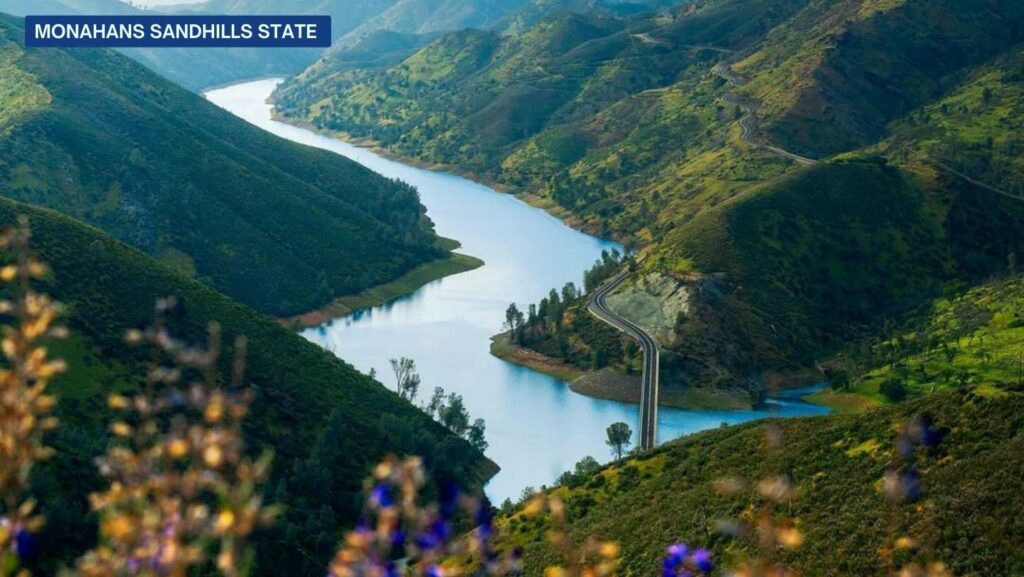
Monahans Sandhills State Park is a unique destination in West Texas known for its expansive sand dunes. The park provides photographers with a rare opportunity to capture a different side of the state’s landscape.
What to Photograph:
- Unique Sand Dunes: Capture the rolling sand dunes, especially when the light creates beautiful patterns and textures.
- Sunset Views: The park is known for its spectacular sunsets, which transform the dunes into a palette of warm colors.
Activities:
- Sand Sledding: Try your hand at sand sledding down the dunes, offering the chance for action shots and fun moments.
- Camping: The park’s campground allows you to stay overnight and enjoy the dunes at different times of day.
Photography Tips:
- Timing is Key: The best lighting for photographing the dunes is during sunrise or sunset when the shadows create depth and definition.
- Play with Angles: Experiment with different perspectives, such as low angles, to capture the dunes’ scale and vastness.
Monahans Sandhills State Park is a remarkable location for photographers seeking to capture the stark beauty and otherworldly landscape of Texas’s sand dunes.
13. Natural Bridge Caverns

Natural Bridge Caverns is the largest known show cave in Texas, located less than an hour northeast of San Antonio. This underground attraction offers photographers a unique opportunity to capture stunning cave formations in a one-of-a-kind environment.
What to Photograph:
- Stunning Cave Formations: The caverns feature a variety of impressive formations such as stalactites, stalagmites, flowstones, and more, making for breathtaking photographs.
Tips:
- Join a Guided Tour: Explore the caverns with a guided tour to discover different cave trips and get the best access to the caves’ incredible sights.
- Adjust Camera Settings: Due to low lighting, adjust your camera’s ISO, aperture, and shutter speed to capture clear, sharp images.
- Avoid Tripods: Cameras are allowed on tours, but tripods are not permitted, so prepare to take handheld shots.
Natural Bridge Caverns offers a rare and mesmerizing underground photography experience, allowing you to capture the unique beauty of Texas’s geological wonders.
14. Dallas Arboretum and Botanical Gardens
Dallas Arboretum and Botanical Gardens is a vibrant urban oasis located along White Rock Lake near downtown Dallas. The arboretum is known for its diverse gardens and lush landscapes, providing photographers with a variety of scenes to capture throughout the year.
What to Photograph:
- Diverse Gardens: Capture the beauty of different gardens such as the Color Garden with its vibrant hues and the Children’s Adventure Garden, which is filled with interactive elements.
- Architectural Features: Look for scenic fountains, sculptures, and pergolas that add depth and interest to your photographs.
Seasonal Highlights:
- Year-Round Blooms: The arboretum is home to a wide variety of plants that bloom throughout the year, providing a rich palette of colors for your photos.
- Seasonal Events: Visit during special events, such as the pumpkin village in the fall or the tulip festival in spring, to capture themed displays and celebrations.
Photography Tips:
- Time Your Visit: Visit during different seasons and times of day to capture changing lighting and the gardens in full bloom.
- Focus on Details: Look for close-up shots of flowers, foliage, and unique plant structures to capture the intricate beauty of the gardens.
Dallas Arboretum and Botanical Gardens is a must-visit destination for photographers seeking to capture the stunning natural beauty and seasonal charm of Dallas.
15. The Alamo

The Alamo is a historic mission located in downtown San Antonio, Texas. It played a significant role in the Texas Revolution and today stands as a symbol of Texas history and heritage. The mission’s striking architecture and storied past make it an iconic subject for photographers.
What to Photograph:
- The Historic Mission: Capture the Alamo’s beautiful stone structure, with its distinct façade and arched entrance.
- Architectural Details: Look for intricate carvings, columns, and other architectural elements that add character to your photos.
Tips:
- Capture the Alamo during Sunset: The soft, warm lighting of sunset creates a beautiful scene around the mission, enhancing the colors and highlighting the structure’s details.
- Frame the Alamo: Use surrounding elements such as trees and gardens to frame your shots and add depth to your photographs.
The Alamo is a must-visit destination for photographers interested in capturing a piece of Texas history and its iconic architecture. Whether you’re exploring the grounds during the day or photographing the mission at sunset, The Alamo provides a wealth of opportunities for memorable images.
Conclusion.
The Lone Star State offers an array of breathtaking locations for photographers to capture its diverse landscapes, natural wonders, and historical sites. From the unspoiled beauty of Padre Island National Seashore to the awe-inspiring depths of Natural Bridge Caverns, Texas provides endless opportunities for stunning photography. The picturesque settings of the Guadalupe River and the serene sand dunes of Monahans Sandhills State Park showcase the state’s tranquil side, while iconic landmarks like The Alamo and the San Antonio River Walk highlight its rich cultural heritage.
In addition, the lush gardens of Dallas Arboretum and Botanical Gardens and the colorful displays at Fort Worth Botanic Garden present photographers with captivating scenes of nature’s splendor. The rugged beauty of Palo Duro Canyon State Park and the towering peaks of the Guadalupe Mountains add to the state’s allure.
No matter where you go in Texas, you are bound to find stunning subjects to photograph, from bustling urban centers to peaceful rural escapes. Each of these beautiful locations presents unique perspectives and experiences that will inspire your photography and capture the heart of Texas. With its diverse range of environments and attractions, Texas is truly a photographer’s paradise.
How much did you like Our detailed Texas Photo Guide: 15 Must-See Scenic Locations in 2024? Review Also, please share these Blogs with your friends on social media.
Recommended
- Travel Hacks
- 12-Ways to Keep Kids Entertained
- Travel Tips for Single Parents
- Top travel tips for seniors
- 10 Best Hiking Trails in Sedona
- Top 5 Best Way to travel to Washington DC
- Top 13 Campgrounds in Oregon for 2024

Meet David Hoper, a passionate travel Blog writer with 7+ years of experience in travel content. Through his exemplary storytelling and engaging narratives, he shares his experiences and brings destinations to life. With a keen eye for detail and a love for exploration, he has cultivated a diverse portfolio of travel blogs that inspire and inform readers worldwide.





